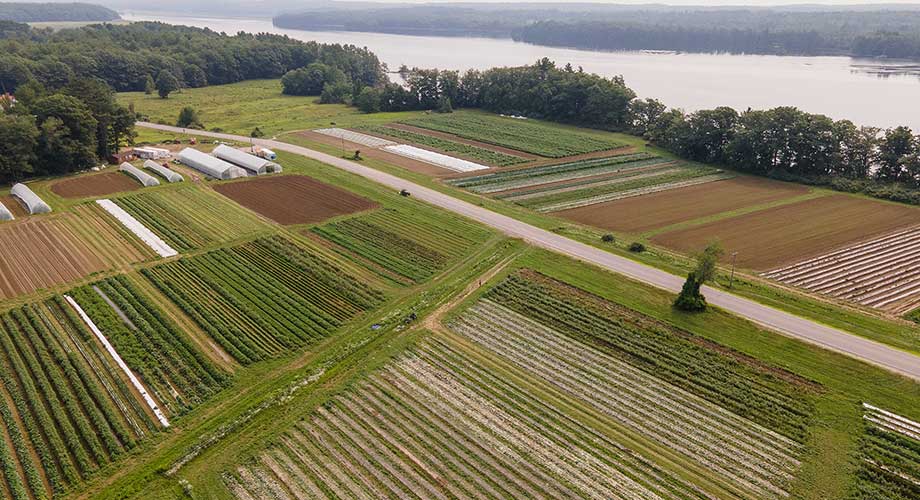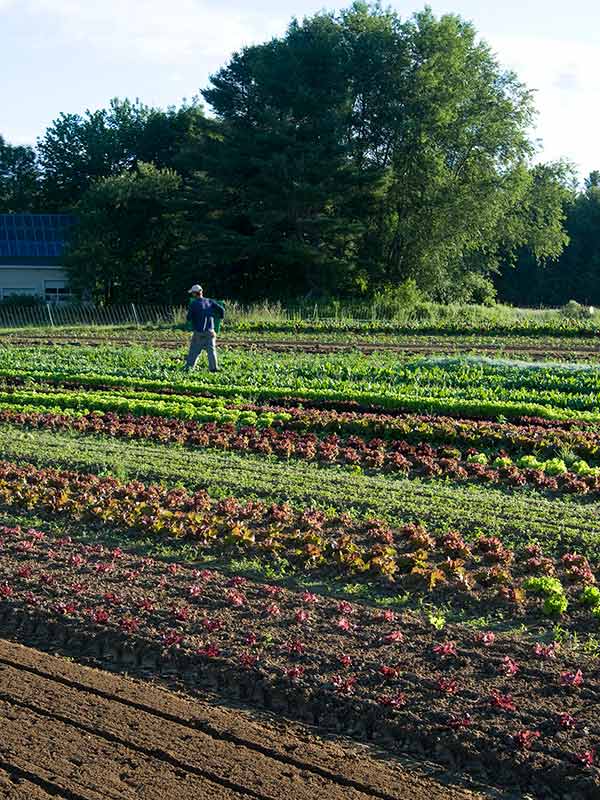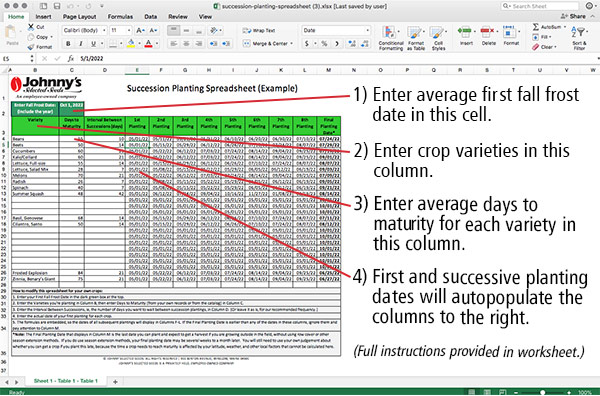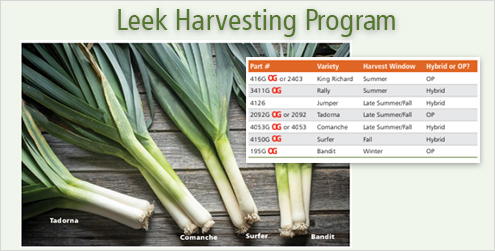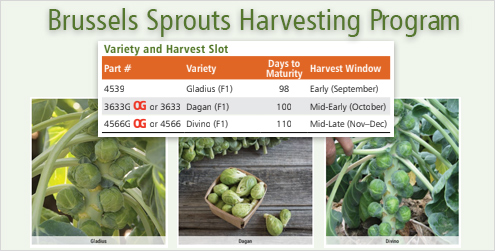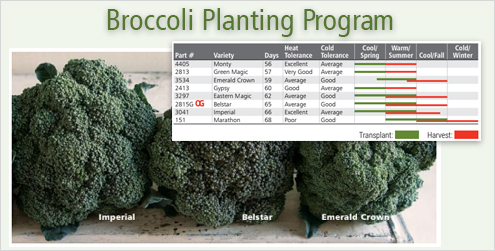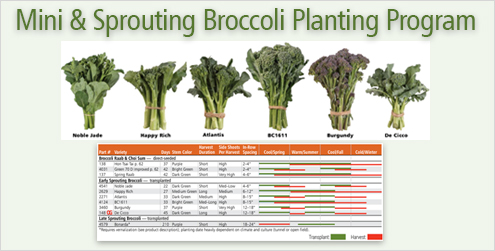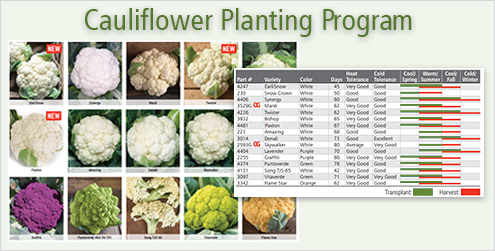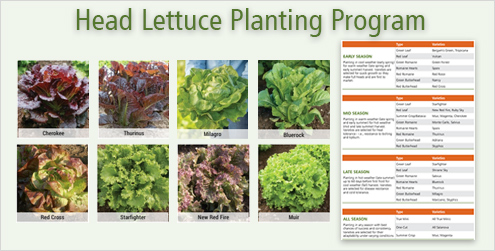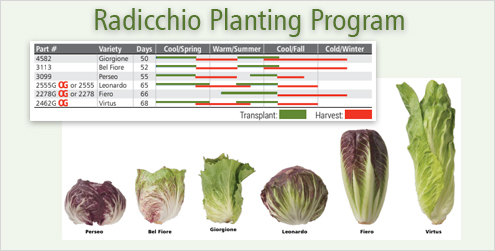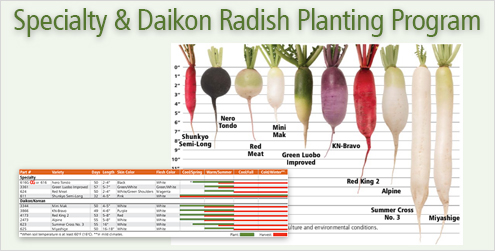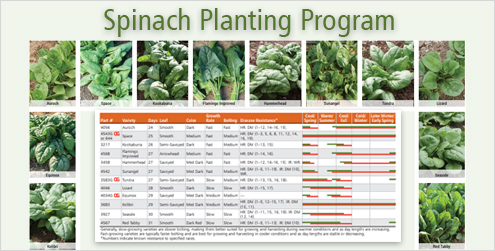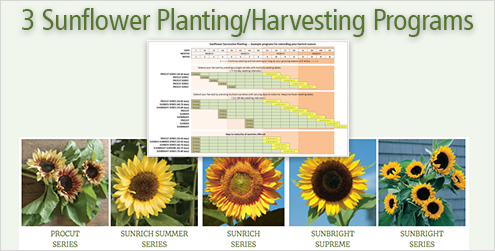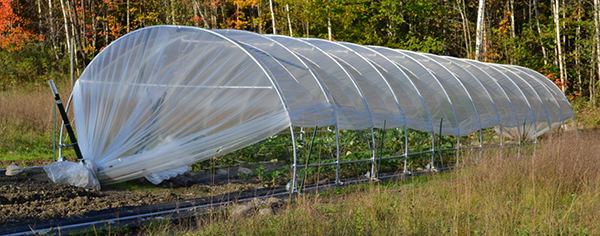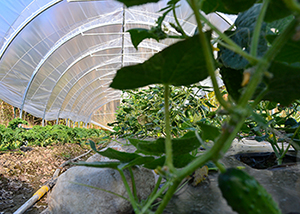- Planning & Plotting Your Market (or Backyard) Garden | An Intro to Johnny's Seed Quantity Calculators & Yield Charts
- Variety Selection Considerations | Tech Sheet (PDF)
- Gaining Efficiency on the Farm | Recommendations from 3 Experts in the Field
- Recordkeeping During the Busy Farming Season | by Taylor Mendell
- Video: Producer Cooperatives for Small-Scale Farmers | Johnny's Webinar Series
- Getting Started with Value-Added Foods & Farm Goods
- The Effect of Shorter Daylength on Winter Production
- Succession Planting Principles & Practices: Methods for Ensuring a Continuous Supply
- Recommended Crops for Succession Planting
- Succession-Planting Calculator (XLSX) | Johnny's Selected Seeds
- Johnny's Planting & Harvesting Programs
- Succession-Planting Interval Chart for Flowers
- Succession-Planting Interval Chart for Herbs
- Succession Planting Charts for Vegetables
- Climate Adaptation for Vegetable & Flower Farmers | Johnny's Educational Webinar Resources
- Video: Climate Adaptation for Vegetable & Flower Farmers | Johnny's Webinar Series
- 11 Things for Farming Elders — and their Beneficiaries — to Know About Medicaid Liens
SUCCESSION PLANTING • Principles & Practices
Methods for Providing a Continuous Supply
4 KEY STRATEGIES
- INTERVAL PLANTING: Same crop and variety, sown at successive intervals.
- HARVESTING PROGRAM: Same crop, different varieties with differing maturity dates, sown concurrently.
- PLANTING PROGRAM: Same crop, different varieties with differing seasonal adaptations, sown successively.
- SEASON EXTENSION TECHNOLOGY
As the days grow longer each spring, temperatures increase and the workload ramps up, too. But once the midsummer sun reaches its zenith, the crops you plant thereafter will be growing and maturing in progressively shorter, cooler days. Because light and temperature are primary drivers of plant lifecycles, it's important to plan your plantings so crops are ready to harvest when you need them — from the very earliest possible date right through to the very latest.
Advantages of Succession aka Staggered Planting
Putting the principles of succession planting into practice takes some of the guesswork out of planning and results in a steadier supply of produce — ready for harvest over the longest possible period. Succession planting gives you the ability to:
- Maximize space
- Extend the harvest window
- Maintain a continuous supply
- Optimize quality and yield
4 Key Strategies
Several proven strategies can be adopted to help ensure a continuous supply of fresh produce from early spring through summer and into fall and even winter.
Follow the principles and practices of succession planting laid out below to achieve a continuous supply. We start with the simplest method and proceed to the more evolved. But these are just four basic methods — as you keep records and gain experience, you can combine methods, adopt those of others, and innovate your own to achieve even greater results.
1 • INTERVAL PLANTING
Same crop, same variety, sown at successive intervals
Johnny's Research and Trialing team has created a set of charts that show the recommended intervals between sowings for crops that are especially well-suited to successive plantings.
Planting tips and notes are provided, and the charts can also help you decide which crops to grow concurrently.
The timing between successive plantings on these charts relates to the average days to maturity (DTM) for the crop listed, based on standard growing practices. Keep in mind that local frost dates, latitude, growing zone, climatic variables, and cultural methods will influence days to maturity. After midsummer, for instance, growers at most latitudes start timing successive plantings more closely together, as they will mature more slowly as the days grow shorter and cooler.
Download calculator (XLSX) …
Visit PlantMaps for the average first and last frost dates in your region…
To forecast the dates of your successive plantings, try our Succession-Planting Calculator. You can use this calculator to determine dates for sequential, staggered plantings — whether counting forward from last regional frost date in spring or backwards from first regional frost date in fall.
You also can combine indoor seed-starting with direct-seeding to maximize the number of successions you can achieve. This simply requires starting seeds indoors for many crops you might normally direct-seed, such as arugula, cilantro, cucumbers, parsley, spinach, squash, and sunflowers. When you transplant the seedlings outside, direct-seed some of the crop at the same time. The transplanted crop will be ready for harvest first, and the direct-seeded crop will mature a few weeks later.
2 • HARVESTING PROGRAMS
Same crop, different varieties with differing maturity dates, sown concurrently
Many seed crops are bred and selected for particular traits such as heat or cold tolerance or ability to thrive under lower or higher light conditions. Within a particular crop, some varieties perform better in cool weather and others in warm weather, some under increasing daylength and others under decreasing daylength. If you grow only one variety of a crop, you may find it falls short of its potential at some point or another during the season.
By growing several varieties, you can span a longer season and still offer consistently high quality produce. Our harvesting programs recommend sowing multiple varieties with different days-to-maturity (DTM) to spread the harvest across time from a single planting.
For example, our leek harvesting program involves concurrently planting several leek varieties that require from 75 to 120 days to mature, to allow you to successively harvest leeks from summer through fall to winter.
3 • PLANTING PROGRAMS
Same crop, different varieties with differing seasonal adaptations, sown successively
Our planting programs recommend sowing different varieties with different days-to-maturity (DTM) and differing seasonal adaptability, at different times of the year.
As with interval succession planting, growers can apply season-extension technology as an integral part of their planting program methodology.
Planting programs, especially when combined with season-extension techniques, can allow for the maximal harvest window across time.
The Sunflower Charts nicely demonstrate how all three of the above strategies — interval planting, and harvesting and planting programs — can be creatively combined to make the most of succession-planting concepts. Visit the Planting Program section of the Grower's Library for details on implementing these programs.
4 • SEASON EXTENSION TECHNOLOGY
Finally, protected cropping bears mention as it can significantly expand the limits of your growing season, allowing for production earlier in spring, later into fall and winter — and ultimately to year-round production.
After midsummer, for example, growers where frosts come early can begin to implement season-extension technology to protect crops that mature into the fall. Covering the crops can allow for holding them in the field without damage from fall and early winter weather.
You can tailor the protection to the crop, the anticipated frost dates, and other variables precise and imprecise, known and unknown to you as a grower. Of the many possibilities, here are a few ways to use season-extension structures to extend the limits of your harvest.
- Plant low-growing crops such as greens in QuickHoops™ low tunnels, or, when cooler weather arrives cover them with floating row cover or QuickHoops to hold them in the field.
- Cover peppers and eggplants with row cover to help them survive the first frost or two as your days grow shorter. There is frequently a return of mild weather following the first frost that can help some tender crops survive into that period.
- Start the tomato season with an early determinate variety in the high tunnel (there are several that are significantly earlier-maturing), then move on to the later-maturing, better-tasting indeterminates for the remainder of the season, with all of the above having been transplanted into the tunnel at the same time. When the determinate plants stop producing after a few weeks, they can be removed and replaced with a different crop altogether.
- Plant cold-loving crops and recommended winter-harvest crops in early autumn in a hoophouse or caterpillar tunnel to harvest all winter.
- Overwinter some crops under QuickHoops to give them an early start the following spring.
Visit our Season Extension Library to learn more.
Linking It All Together
Succession planting may seem complicated at first, but with practice you'll get the swing of it. Start with a few main crops and project your harvest dates, then use these four key strategies to find further opportunities to extend the harvest. Do the same thing with additional crops next season. Try a few new varieties from the Planting Programs to see how they produce for you. Experiment with high tunnels and low tunnels.
Keep track of the details, then analyze the results. You'll soon be on your way to creating a succession-planting system that provides for abundance and quality — and strong sales — over the longest possible season.
Additional Succession-Planting Resources from Johnny's
- Recommended Crops for Succession Planting (Veg, Herbs & Flowers) • Tables
- Planting Intervals for VEGETABLES • Charts
- Planting Intervals for HERBS • Charts
- Planting Intervals for FLOWERS • Charts
- Succession-Planting CALCULATOR • XLSX
- Johnny's Planting & Harvesting Programs • Charts


